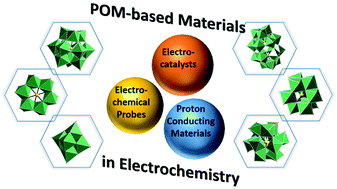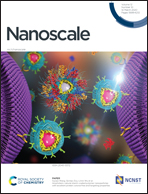Polyoxometalate-based composite materials in electrochemistry: state-of-the-art progress and future outlook
Abstract
Polyoxometalates (POMs) have been developed as a class of promising smart material candidates not only due to their multitudinous architectures but also their good redox activities and outstanding electron and proton transport capacities. Recently, abundant studies on POMs composited with metal nanoparticles (NPs), carbon materials (e.g., carbon nanotubes (CNTs), carbon quantum dots (CQDs), graphene), and conducting polymers or highly-porous framework materials (e.g., MOFs, ZIFs) have been performed and POM-based composite materials (PCMs) undoubtedly show enhanced stability and improved electrochemical performances. Therefore, POMs and PCMs are of increasing interest in electrocatalysis, electrochemical detection and energy-related fields (such as fuel cells, redox flow batteries and so on), thus, developing novel PCMs has long been the key research topic in POM chemistry. This review mainly summarizes some representative advances in PCMs with electrochemical applications in the past ten years, expecting to provide some useful guidance for future research.

- This article is part of the themed collection: Recent Review Articles


 Please wait while we load your content...
Please wait while we load your content...